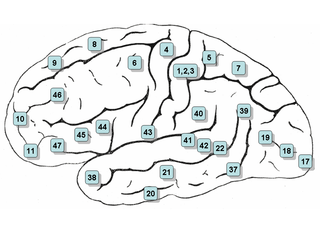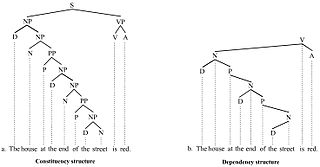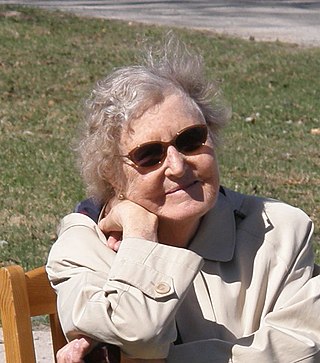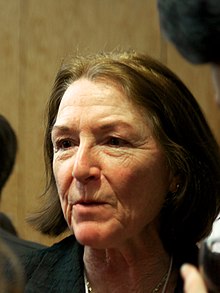Psycholinguistics or psychology of language is the study of the interrelation between linguistic factors and psychological aspects. The discipline is mainly concerned with the mechanisms by which language is processed and represented in the mind and brain; that is, the psychological and neurobiological factors that enable humans to acquire, use, comprehend, and produce language.

Neurolinguistics is the study of neural mechanisms in the human brain that control the comprehension, production, and acquisition of language. As an interdisciplinary field, neurolinguistics draws methods and theories from fields such as neuroscience, linguistics, cognitive science, communication disorders and neuropsychology. Researchers are drawn to the field from a variety of backgrounds, bringing along a variety of experimental techniques as well as widely varying theoretical perspectives. Much work in neurolinguistics is informed by models in psycholinguistics and theoretical linguistics, and is focused on investigating how the brain can implement the processes that theoretical and psycholinguistics propose are necessary in producing and comprehending language. Neurolinguists study the physiological mechanisms by which the brain processes information related to language, and evaluate linguistic and psycholinguistic theories, using aphasiology, brain imaging, electrophysiology, and computer modeling.
In linguistics, linguistic competence is the system of unconscious knowledge that one knows when they know a language. It is distinguished from linguistic performance, which includes all other factors that allow one to use one's language in practice.

In linguistics, a treebank is a parsed text corpus that annotates syntactic or semantic sentence structure. The construction of parsed corpora in the early 1990s revolutionized computational linguistics, which benefitted from large-scale empirical data.
Marianne Mithun is an American linguist specializing in American Indian languages and language typology. She is a professor of linguistics at the University of California at Santa Barbara, where she has held an academic position since 1986.

Janet Pierrehumbert is Professor of Language Modelling in the Oxford e-Research Centre at the University of Oxford and a senior research fellow of Trinity College, Oxford. She developed an intonational model which includes a grammar of intonation patterns and an explicit algorithm for calculating pitch contours in speech, as well as an account of intonational meaning. It has been widely influential in speech technology, psycholinguistics, and theories of language form and meaning. Pierrehumbert is also affiliated with the New Zealand Institute of Language Brain and Behaviour at the University of Canterbury.
Bootstrapping is a term used in language acquisition in the field of linguistics. It refers to the idea that humans are born innately equipped with a mental faculty that forms the basis of language. It is this language faculty that allows children to effortlessly acquire language. As a process, bootstrapping can be divided into different domains, according to whether it involves semantic bootstrapping, syntactic bootstrapping, prosodic bootstrapping, or pragmatic bootstrapping.
In linguistics, grammaticality is determined by the conformity to language usage as derived by the grammar of a particular speech variety. The notion of grammaticality rose alongside the theory of generative grammar, the goal of which is to formulate rules that define well-formed, grammatical, sentences. These rules of grammaticality also provide explanations of ill-formed, ungrammatical sentences.
Nina Hyams is a distinguished research professor emeritus in linguistics at the University of California in Los Angeles.
Lila Ruth Gleitman was an American professor of psychology and linguistics at the University of Pennsylvania. She was an internationally renowned expert on language acquisition and developmental psycholinguistics, focusing on children's learning of their first language.
Sandra (Sandy) Chung is an American linguist and distinguished professor emerita at the Department of Linguistics at the University of California, Santa Cruz. Her research focuses on Austronesian languages and syntax.

Angela Friederici is a director at the Max Planck Institute for Human Cognitive and Brain Sciences in Leipzig, Germany, and is an internationally recognized expert in neuropsychology and linguistics. She is the author of over 400 academic articles and book chapters, and has edited 15 books on linguistics, neuroscience, language and psychology.

Ilse Lehiste was an Estonian-born American linguist, author of many studies in phonetics.
Lyn Frazier (born October 15, 1952, in Madison, Wisconsin) is an experimental linguist, focusing on psycholinguistic research of adult sentence comprehension. She is professor emerita at the University of Massachusetts, Amherst.

Alice Carmichael Harris is an American linguist. She is Professor emerita of Linguistics at the University of Massachusetts Amherst.
Elisabeth O. Selkirk is a theoretical linguist specializing in phonological theory and the syntax-phonology interface. She is currently a professor emerita in the Department of Linguistics at the University of Massachusetts, Amherst.
Megan Jane Crowhurst is an Australian- and Canadian-raised linguist and Professor of Linguistics at the University of Texas at Austin in the United States.
Donca Steriade is a professor of Linguistics at MIT, specializing in phonological theory.
Maria Fernanda Ferreira is a cognitive psychologist known for empirical investigations in psycholinguistics and language processing. Ferreira is Professor of Psychology and the Principal investigator of the Ferreira Lab at University of California, Davis.

Diane Brentari is an American linguist who specializes in sign languages and American Sign Language in particular.







